Cycling Sardinia: Everything You Need to Know
The ultimate guide to cycling Sardinia — discover the top routes, best time to ride, and everything else for a perfect holiday on Italy’s most untamed island.
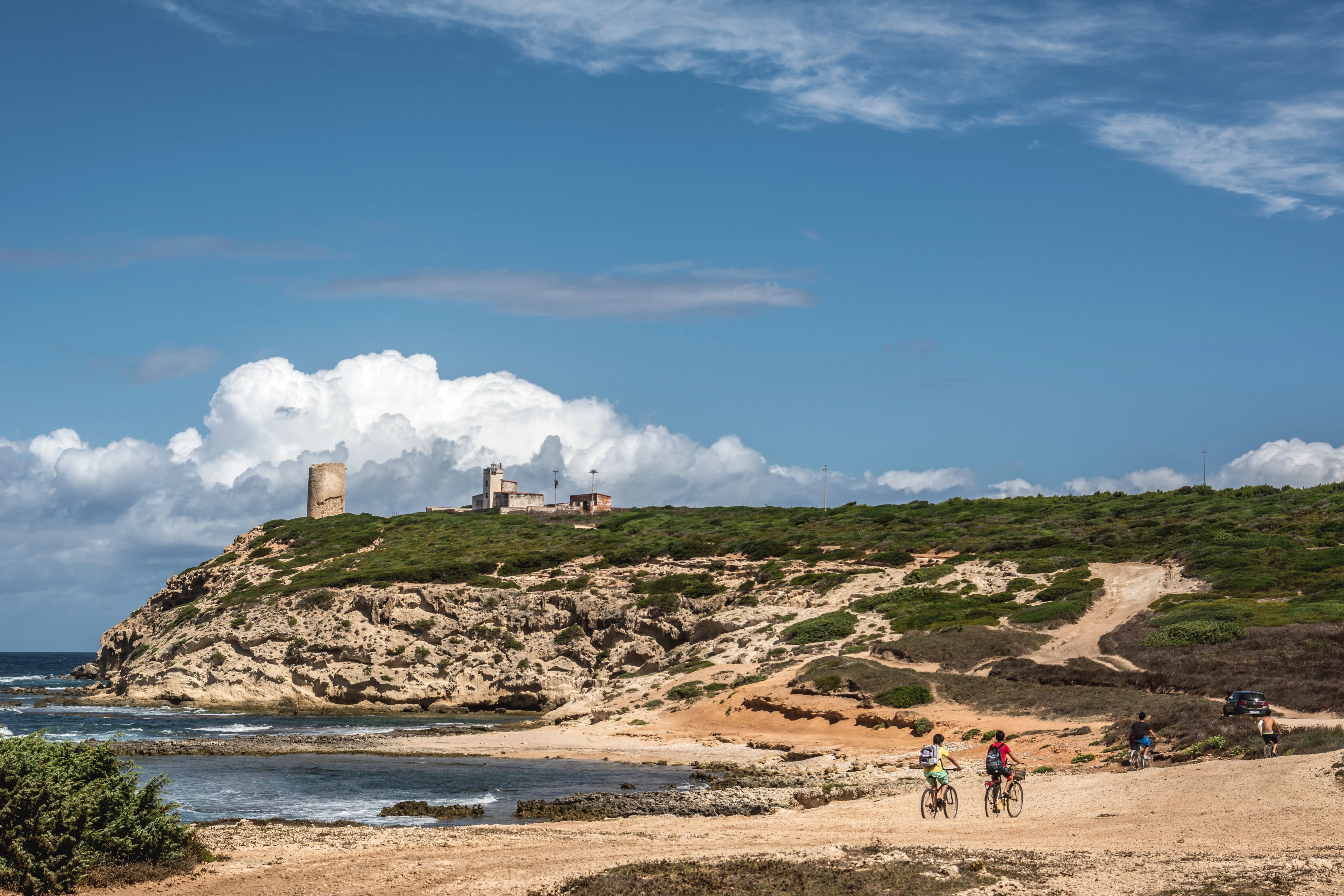
Quick Links
Welcome to your complete guide to cycling Sardinia — a practical, easy-to-use resource that gives you everything you need to plan an unforgettable cycling holiday on Italy’s most untamed island.
In this guide, you’ll discover:
And much, much more!
About Sardinia
Sardinia is the second-largest island in the Mediterranean, known for its crystal-clear sea, rugged coastlines, and traditional villages scattered across a wild, open interior.
Located between mainland Italy and Corsica, the island blends ancient history, distinctive local culture, and some of the most unspoiled landscapes in Europe.
Cycling here means:
Long stretches of low-traffic roads — Sardinia has one of the lowest population densities in Italy
Clear coastal routes skirting bays, cliffs, and bright turquoise seas
Rolling rural terrain dotted with cork oak forests, granite formations, and shepherd villages
Inland climbs that deliver big views without Alpine-level difficulty
Distinct cultural regions influenced by thousands of years of history, from nuraghe sites to Aragonese towns
Sardinia’s roads are generally smooth, the gradients well-balanced, and the island’s climate reliably mild for much of the year.
Even if you’ve ridden across Italy before, Sardinia stands apart — quieter, more natural, and landscapes designed to be explored on two wheels.
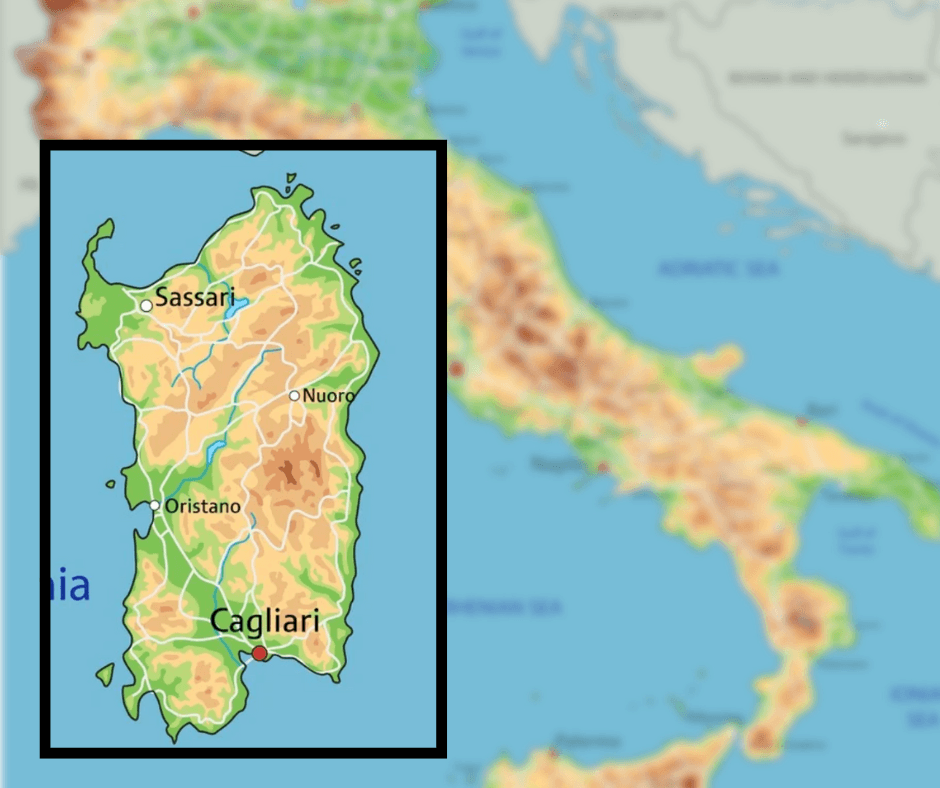
Why Should You Ride Sardinia
Sardinia is one of Italy’s most practical and rewarding destinations for a cycling holiday. The island combines excellent road conditions, predictable weather, and diverse landscapes with a level of quietness that’s increasingly rare in Europe.
In a nutshell — the top reasons to go cycling in Sardinia:
Quiet roads with low traffic for most of the year
Diverse landscapes in a compact area (coast, hills, mountains, plains)
Long cycling seasons with mild spring and autumn weather
Terrain suitable for all levels, from leisure riders to experienced climbers
Safe, clean environment with predictable driving behaviour
Excellent food and fresh local produce for post-ride recovery
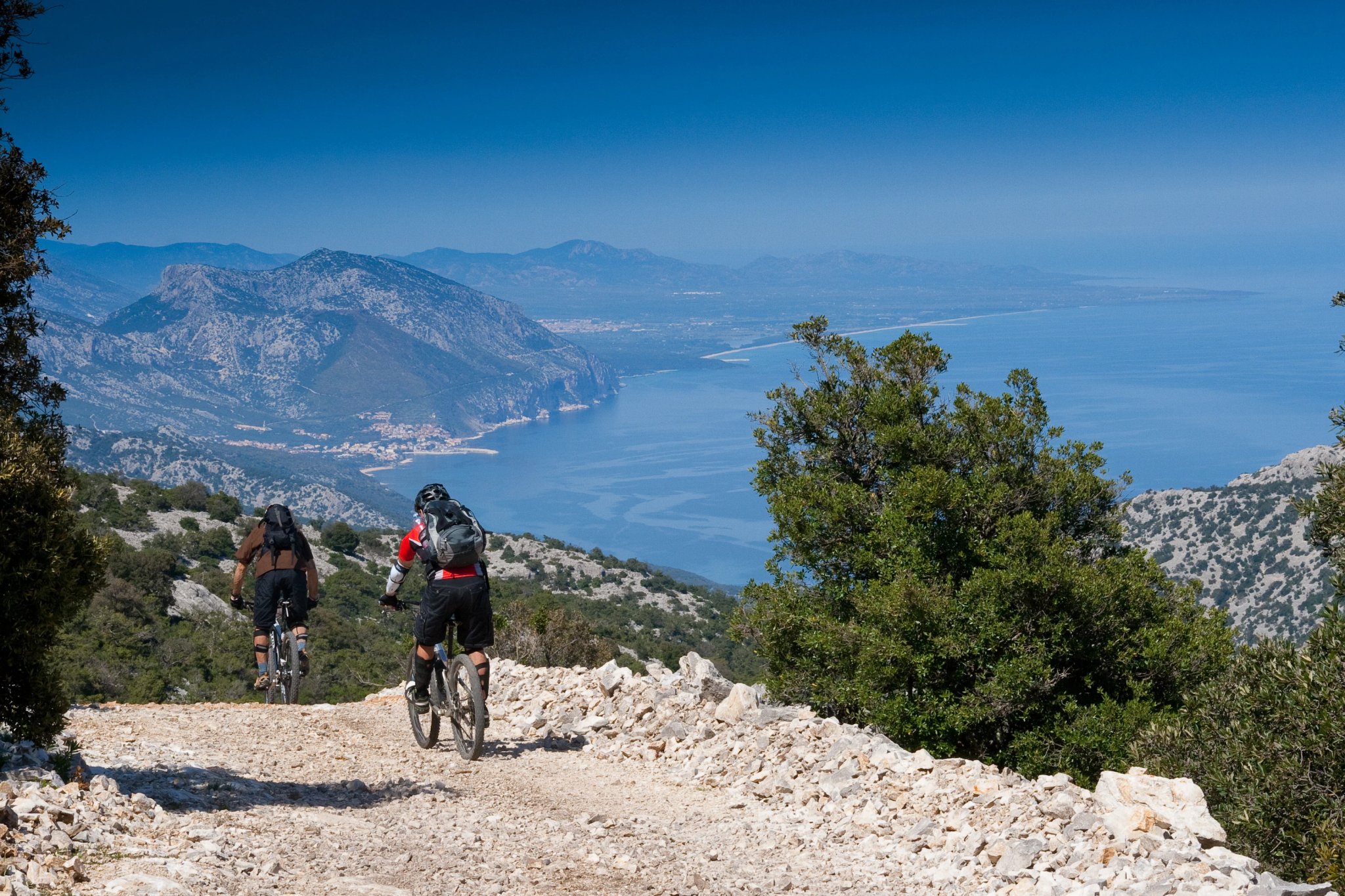
These advantages make Sardinia one of the most enjoyable and accessible cycling destinations in the Mediterranean.
Below is a closer look at each point and what you can expect when cycling in Sardinia or biking in Sardinia, whether you're planning a relaxed coastal holiday or a more challenging multi-day route across the island.
1. Exceptionally Quiet Roads
One of the main reasons cyclists choose Sardinia is how peaceful the riding is. The island has a large road network but a relatively small population, which means many routes—especially outside of July and August—have very light traffic.
For most of the year, you can expect long, uninterrupted stretches of smooth tarmac with few vehicles.

2. A Surprisingly Diverse Landscape
Sardinia is often called a “mini-continent” thanks to its varied geography.
In a compact area, you can cycle through:
Coastal roads with rolling terrain and panoramic sea views
Mountainous interior regions, including the Gennargentu range
Wide plains and vast valleys
Granite hills and rural pastures in the north
This diversity makes the island suitable for both leisurely coastal rides and challenging, athletic tours.
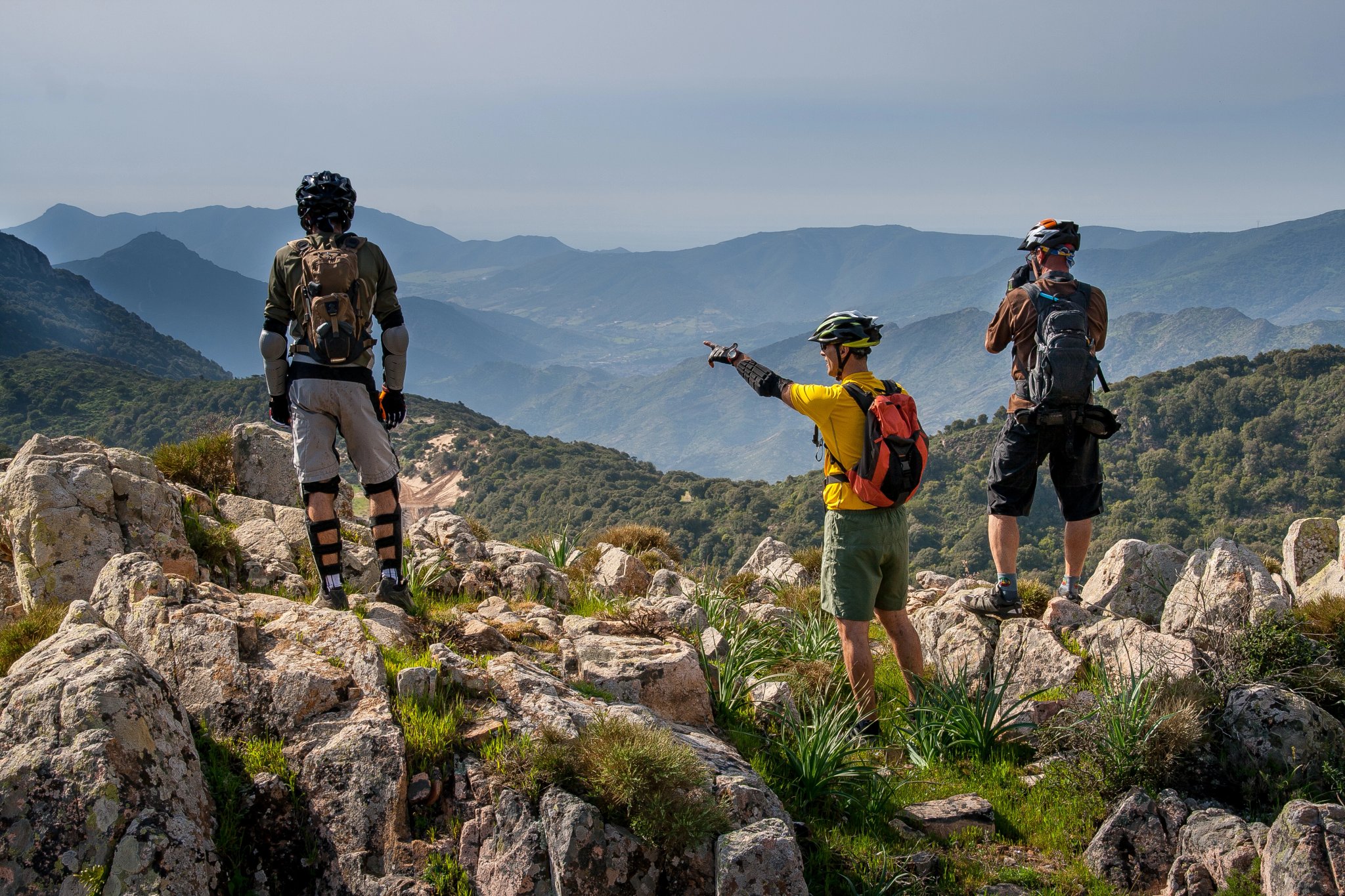
3. Ideal Cycling Climate
Sardinia’s Mediterranean climate gives cyclists a wide seasonal window.
The best conditions fall between March–June and September–November, when temperatures are mild and rainfall is low.
Summer brings heat—especially inland—but early morning coastal rides remain enjoyable. Winters are generally mild near the coast, allowing experienced cyclists to keep riding year-round.
Want to know more about the best times to ride in Sardinia? Skip to the weather section.
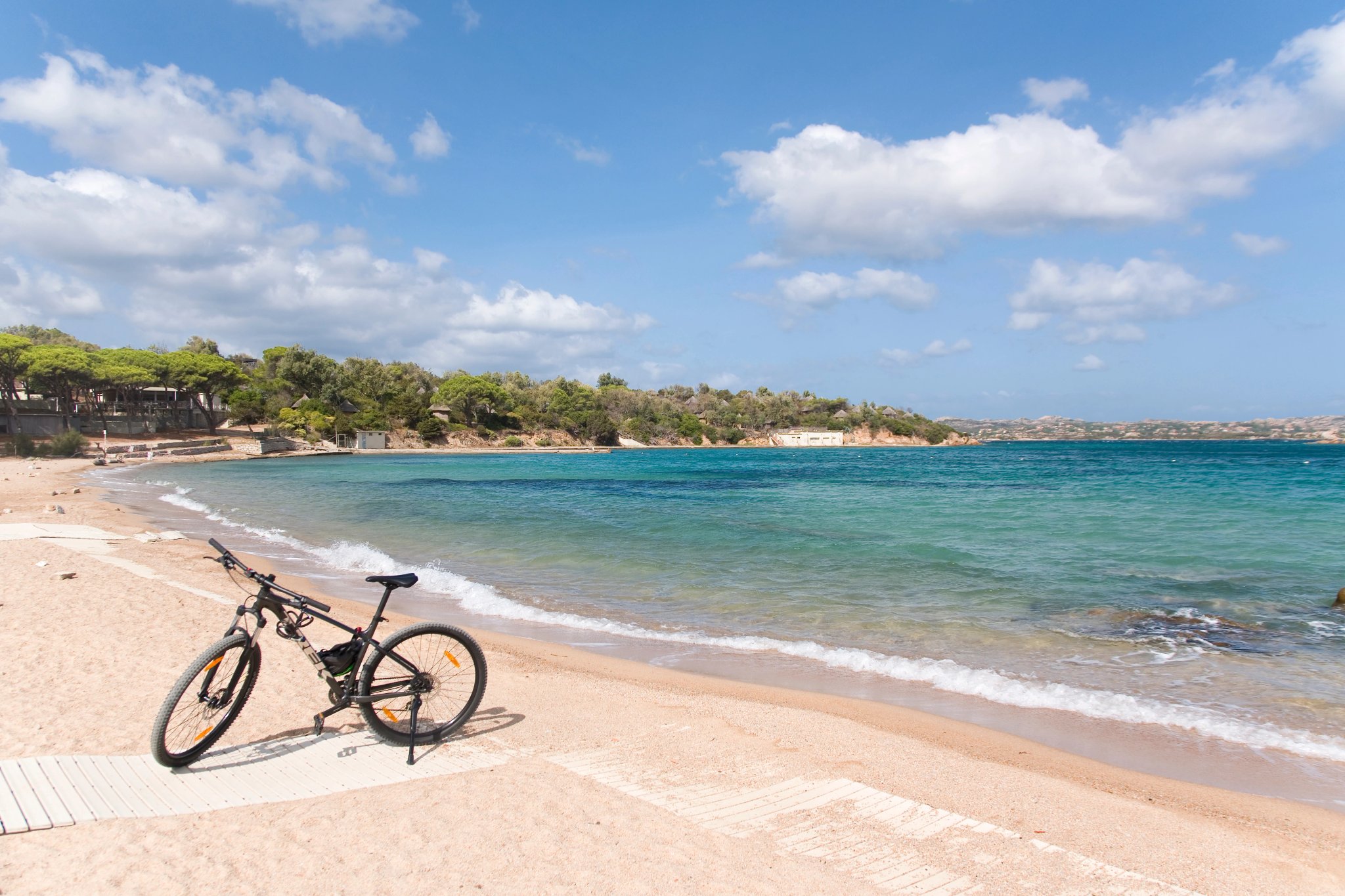
4. Perfect for All Types of Cyclists
The island works well for different cycling styles:
Road cyclists enjoy smooth surfaces, long climbs, and scenic descents.
Gravel riders can explore extensive rural tracks and quiet inland routes.
Mountain bikers find rugged trails in areas such as Gallura, Monte Arcosu, and Ogliastra.
E-bike riders appreciate how easily they can tackle hilly terrain and explore more remote areas.
This range makes Sardinia a versatile destination for mixed-ability groups and custom-designed cycling holidays.
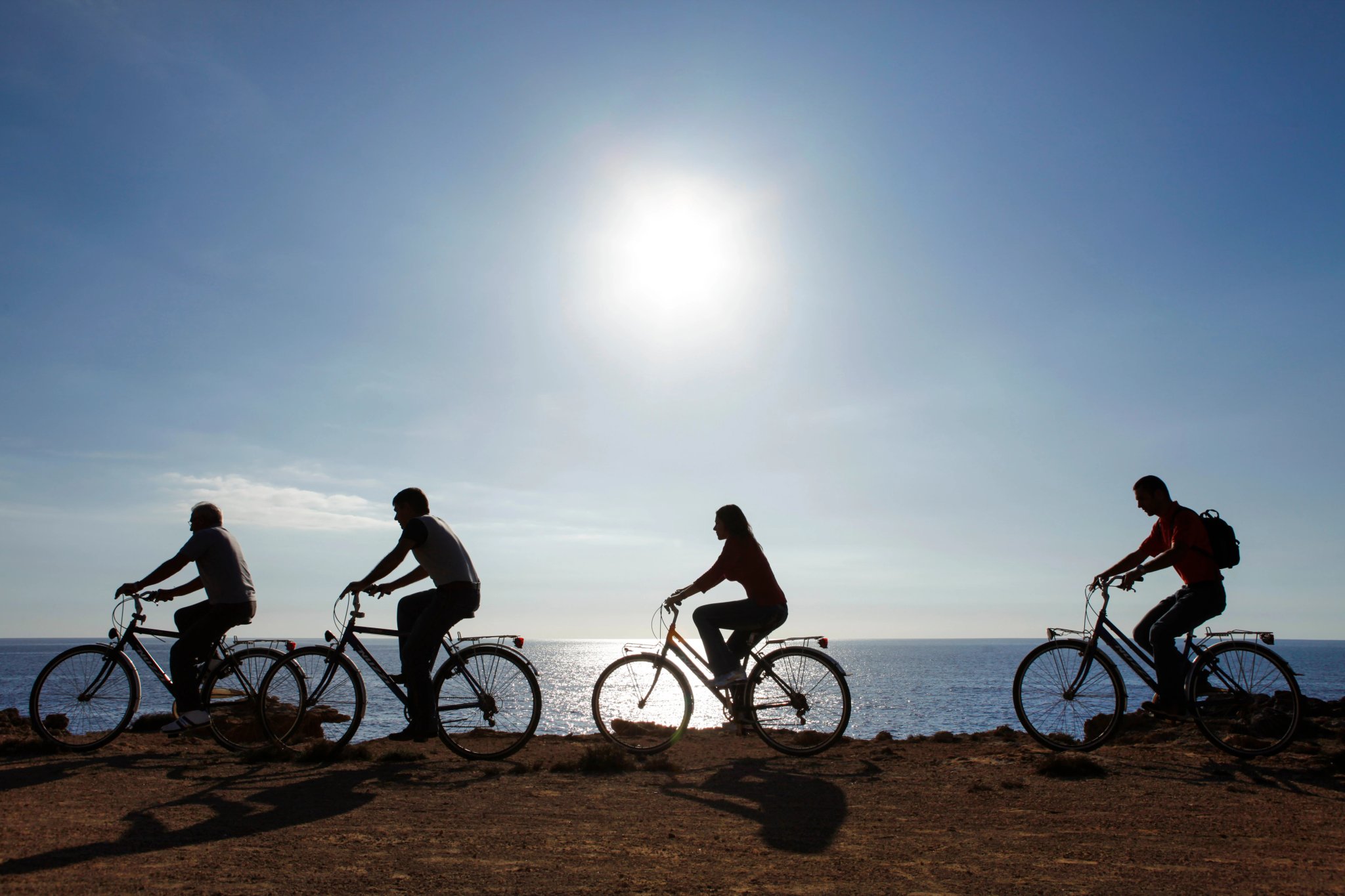
5. Friendly Towns and Excellent Food
Cyclists are warmly received in most Sardinian towns and villages. Cafés, bakeries, and small markets make refuelling easy, and traditional Sardinian dishes—fresh seafood, local cheeses, hearty pastas—are ideal after a day on the bike. Water fountains and local springs are common, especially in mountain regions, making hydration simple even on longer rides.
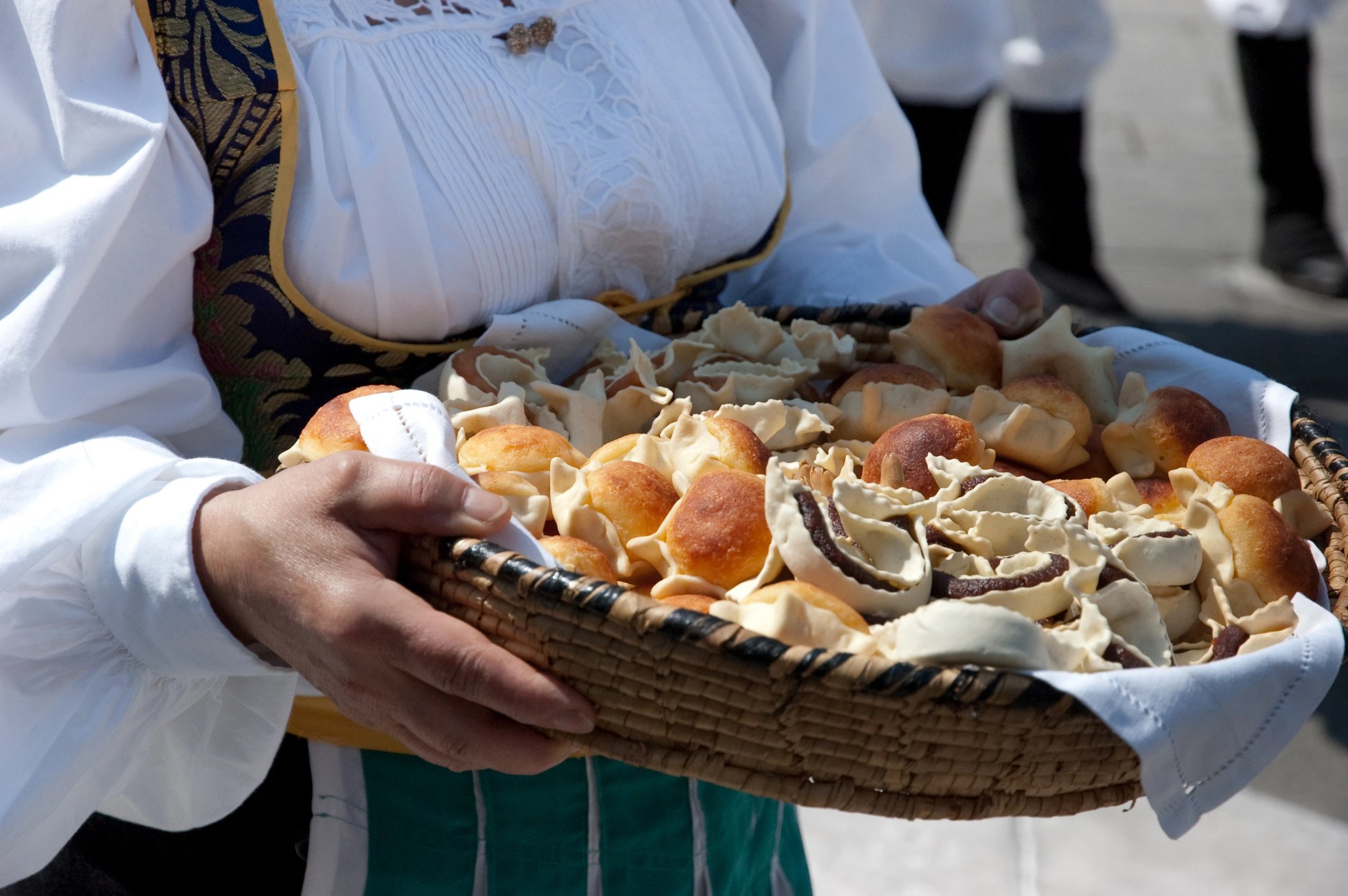
6. Safe, Clean, and Easy to Navigate
Sardinia is known for being clean, safe, and welcoming. Local drivers are generally respectful, especially in rural areas where cycling is common. Well-maintained roads, clear signage between towns, and predictable traffic patterns make riding feel comfortable—even for newer cyclists.
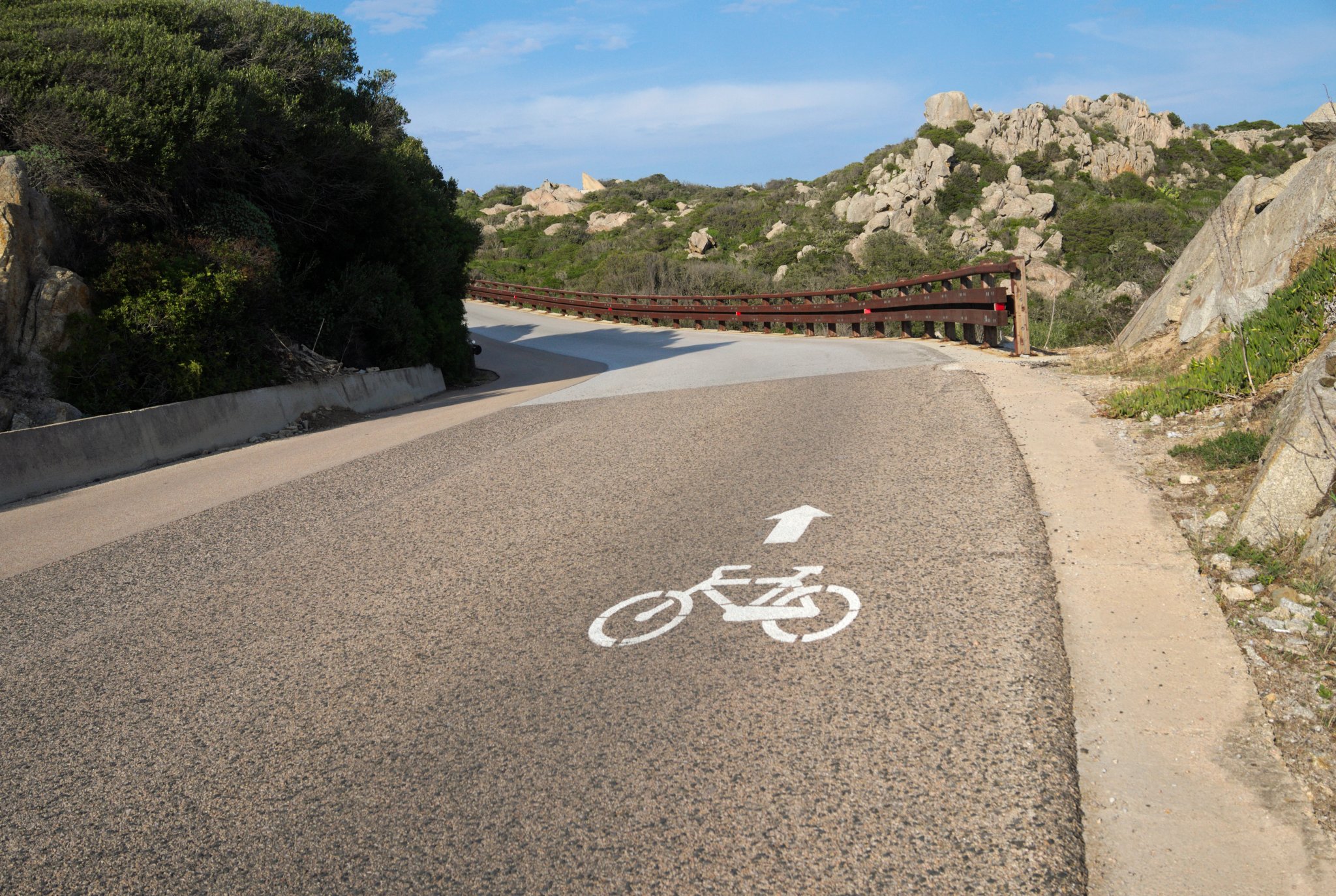
Sardinia’s well-kept roads and respectful drivers make riding feel comfortable
7. Strong Cycling Culture & Support Services
The island has developed a solid cycling culture over the years, with high-quality bike rentals, repair shops in major towns, and accommodation that understands cyclists’ needs. This makes it easy to enjoy a smooth, hassle-free riding experience—whether you're looking for relaxed touring or challenging endurance days.
Best Time to Ride Sardinia
Sardinia offers one of the broadest cycling seasons in the Mediterranean thanks to its warm springs, long autumns, and mild coastal winters.
Inland regions can be significantly hotter in summer and noticeably cooler in winter, so timing your trip around the terrain you want to ride is key.
At a glance:
April–June: Best overall conditions for most routes
July–August: Hot inland; coastal or short early rides only
September–mid October: Prime season for touring and point-to-point routes
Late October–March: Mild on the coast, colder inland; good for relaxed coastal riding
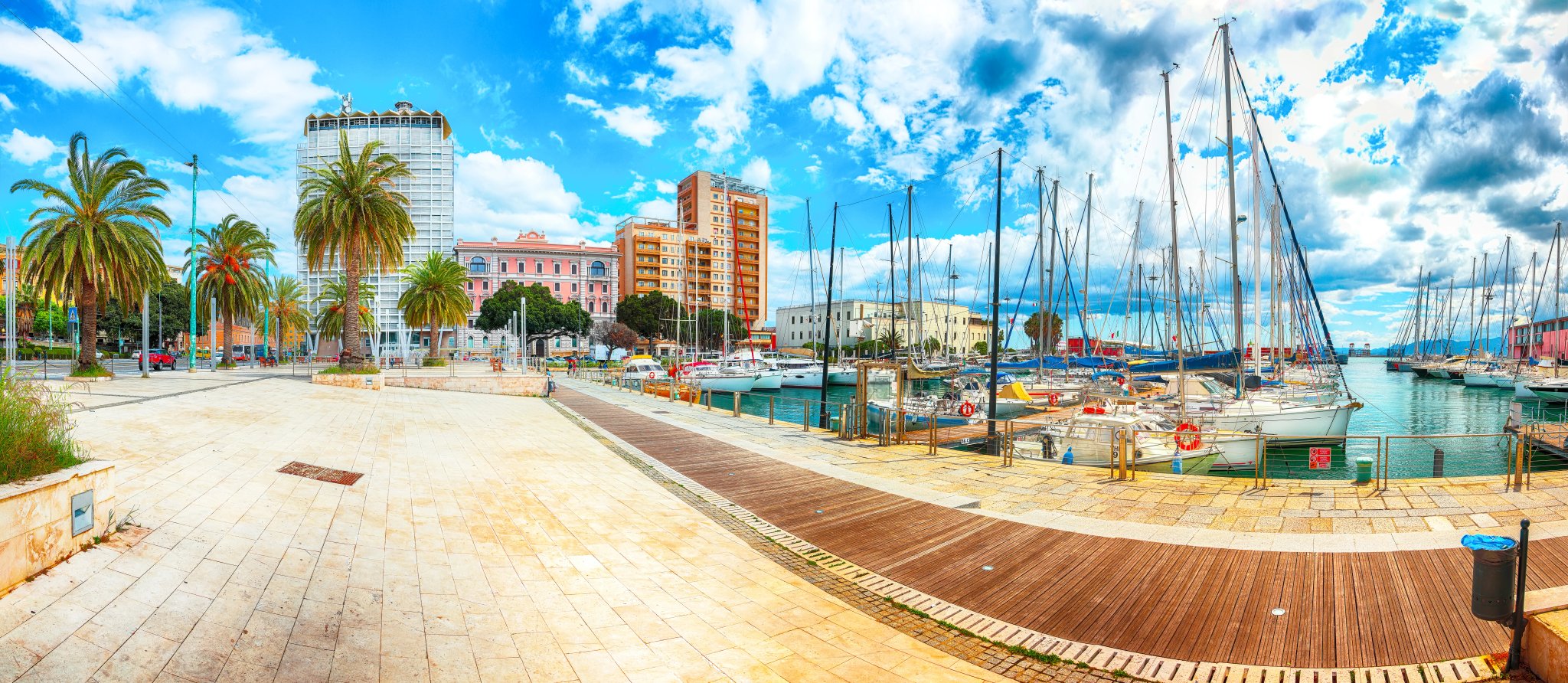
Below is a Sardinia-specific breakdown of each season, based on climate data and typical cycling conditions.
Spring (March–May)
Spring is widely considered the ideal time to cycle Sardinia.
Temperatures rise quickly from March, roads are quiet, and the island is green after winter rains. Coastal routes are warm and breezy, while inland climbs remain comfortable.
Typical temperatures: 15–23 °C on the coast
Best for: Multi-day tours, long steady climbs, mixed-terrain riding
What to expect:
Comfortable temperatures even on longer inland climbs
Very low traffic before the summer tourism season
Clear visibility and stable weather
Great time for both beginners and experienced riders

Summer (June–August)
Summer brings hot, dry weather across Sardinia. Coastal areas stay manageable thanks to sea breezes, but inland valleys and mountains can reach high temperatures early in the day. Most cyclists ride at sunrise and finish before midday.
Typical temperatures: 28–34 °C on the coast; hotter inland
Best for: Early-morning coastal rides, short scenic loops
Good to know:
Avoid inland climbs after late morning
Popular beach areas bring more cars near the coast
Ideal time for swimmers who want ride-and-relax days
Many tour operators avoid July–August for long point-to-point routes
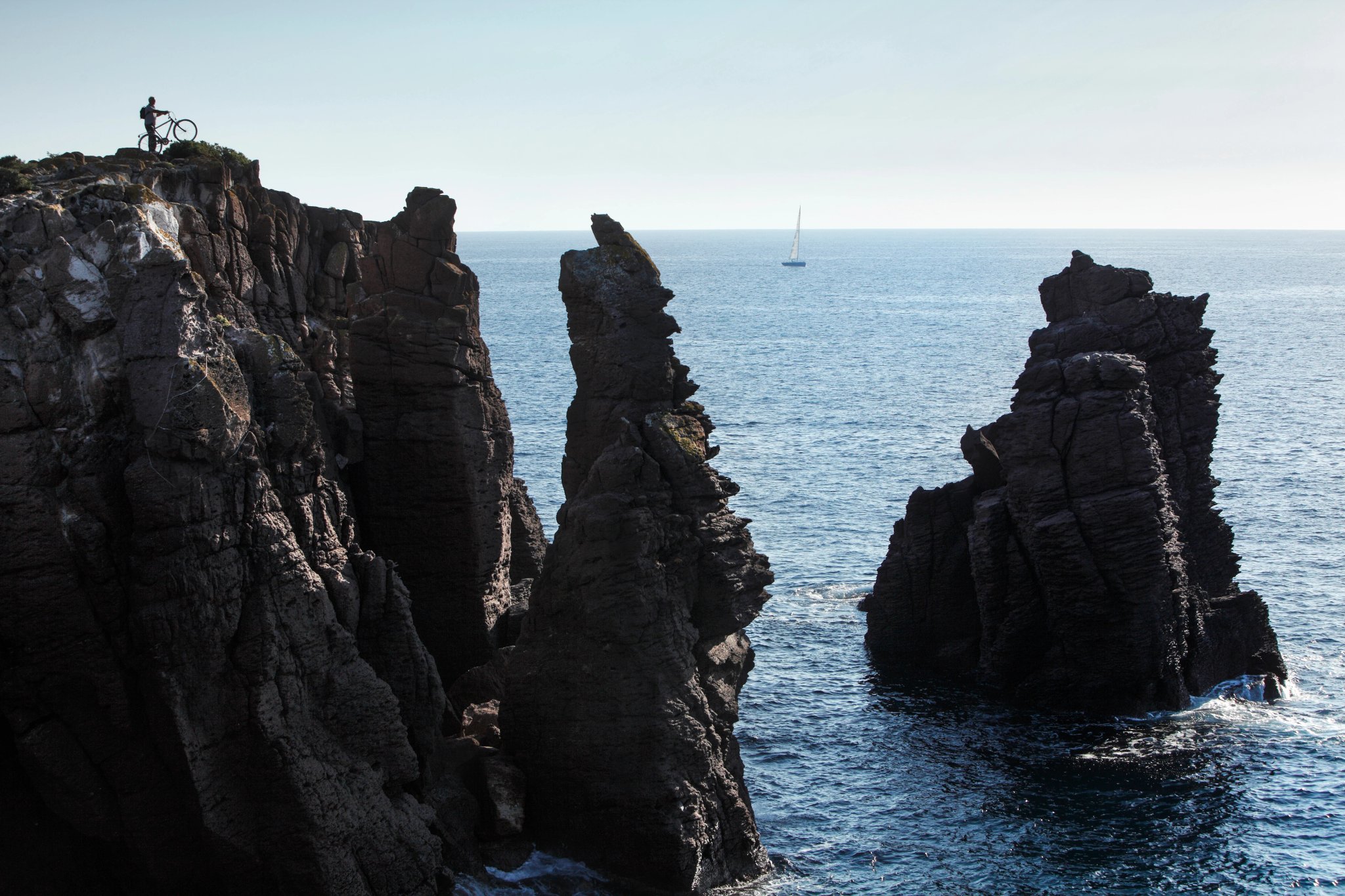
Autumn (September–October)
Autumn is one of the most reliable cycling seasons in Sardinia.
The heat drops off quickly after August, the sea stays warm, and rural roads become quieter again after the summer rush.
Typical temperatures:
Early autumn: 24–28 °C
Late October: 17–21 °C
Best for: Scenic touring, multi-day itineraries, inland explorations
What to expect:
Warm days without summer extremes
Less traffic across the island
Excellent visibility for mountain and coastal viewpoints
Ideal balance for both strong and casual riders

Winter (November–February)
Winter is not a recommended season for cycling in Sardinia, especially for full touring itineraries. Coastal zones can be mild, but conditions are inconsistent and the interior becomes cold, windy, and often wet.
Typical temperatures:
Coast: 10–15 °C
Inland: noticeably colder, with some peaks near freezing
Best for: Off-season training, coastal touring, low-traffic rides
What to expect:
Unpredictable weather windows (wind & showers possible)
Shorter days (important for planning distances)
Some rural services operate on reduced winter schedules
Still a solid option for escaping northern European winters
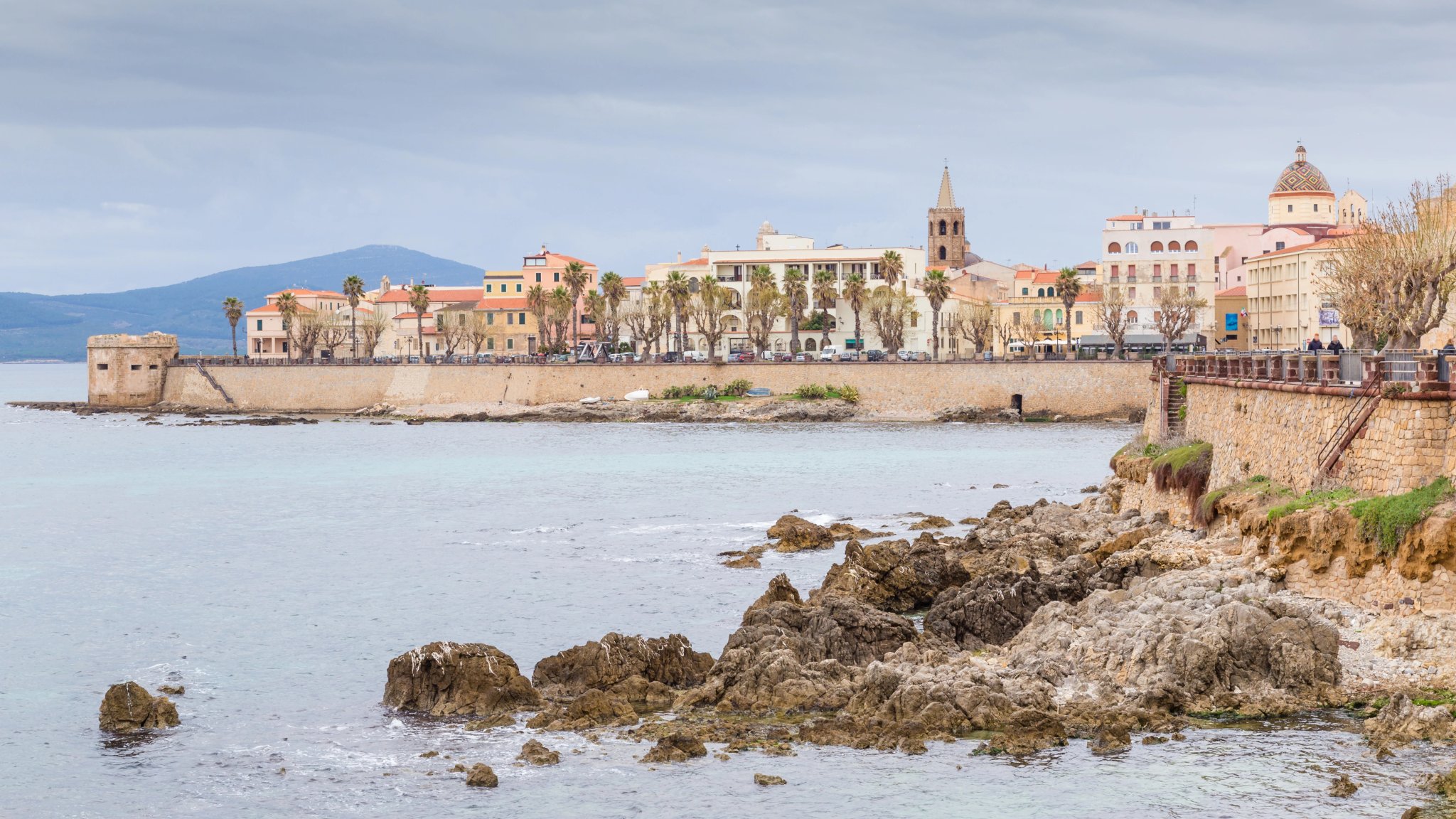
Planning to ride outside Sardinia’s ideal months? Our cycling trips in the Alps, Slovenia, and Austria offer perfect summer conditions, while Portugal and Spain remain excellent winter choices.
Cycling Infrastructure in Sardinia
Sardinia has great cycling potential, but its infrastructure is not uniform. Here’s what cyclists need to know quickly and clearly.
The Good
Quiet secondary roads: Many rural and provincial roads are smooth, scenic, and have very low traffic — ideal for touring.
Good road quality: Main provincial roads are generally well maintained, especially in coastal and populated areas.
Growing bike services: Popular towns (Alghero, Olbia, Cagliari, Dorgali) offer rentals, repairs, and rider-friendly accommodation.
The Limitations
Few dedicated bike lanes: Sardinia has very limited cycle paths outside major towns.
Highways are not suitable: Major roads and fast coastal routes can be unsafe; stick to secondary roads.
Patchy public transport with bikes: Not all buses or trains accept bicycles; inland areas have very limited service.
Sparse signage: Long-distance cycle route signs are inconsistent — GPS navigation is essential.
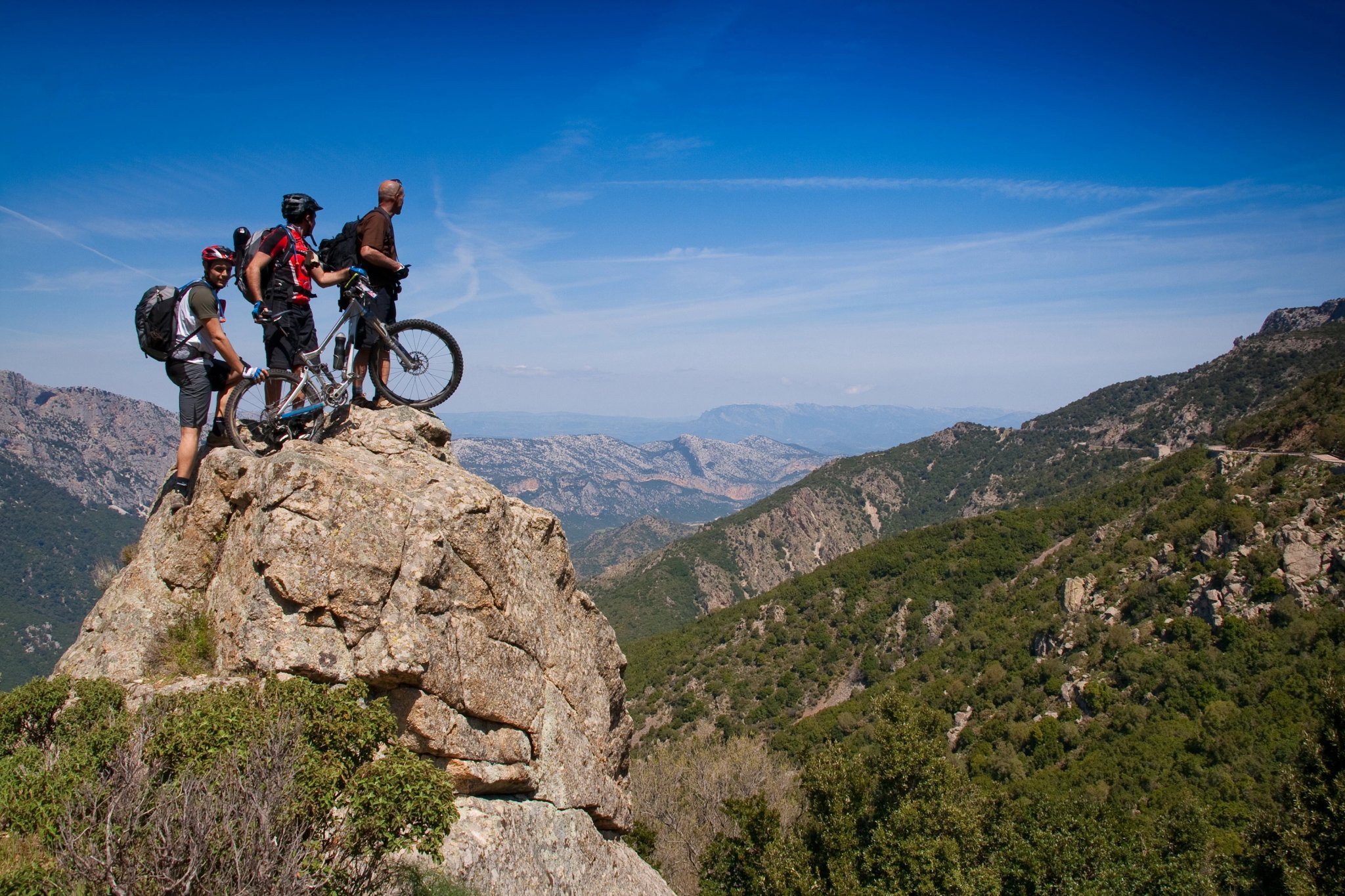
No Need to Worry With Our Support
Even without many bike lanes and with some patchy routes, Sardinia is still excellent for cycling because the roads you actually ride on are quiet, well-maintained, and scenic.
Most of the island is sparsely populated, traffic is low outside towns, and drivers are generally respectful. The result is a destination where you don’t need heavy infrastructure to enjoy safe, enjoyable, and beautiful rides.
Here are just some suggestions:
Stick to secondary and rural roads — they offer the best combination of safety, scenery, and low traffic.
Use GPX navigation rather than relying on signage
If planning this on your own feels overwhelming, don’t worry — our Sardinia bike tour includes reliable GPS routes, detailed day-by-day navigation, and full logistical support. We handle the tricky parts so you can focus on the ride.
If you prefer destinations with more developed cycling infrastructure and easier public transport, mainland Italy might be a better fit. Explore cycling tours across Italy.

Best Cycling Regions in Sardinia
Sardinia is large enough to offer several distinct cycling regions, each with its own character, terrain, and riding style. Whether you want coastal views, quiet rural roads, or challenging mountain climbs, the island has areas that work well for both multi-day tours and day-ride basecamps.
Best Cycling Regions in Sardinia:
Central–East Coast & Ogliastra
West Coast — Alghero → Bosa → Oristano → Costa Verde
Northwest Sardinia — Alghero & surrounding countryside
Southwest Sardinia — Iglesiente & Costa Verde
Barbagia & Gennargentu Mountains
Gallura & Northeast Sardinia (Costa Smeralda Hinterland)
Now let’s take a closer look at each region — what makes it special, why cyclists love it, and who it’s best suited for.

1. Central-East Coast & Ogliastra
One of the most beautiful — and most challenging — areas
The east coast is home to some of Sardinia’s highest cliffs, deep valleys, and long climbs. It’s visually stunning but physically demanding.
Why cyclists love it:
Tougher gradients and sustained climbing
Spectacular limestone landscapes
Hotter conditions in summer due to inland proximity
Rewarding descents with panoramic views
Good for: strong riders, climbing-focused trips, spring and autumn tours
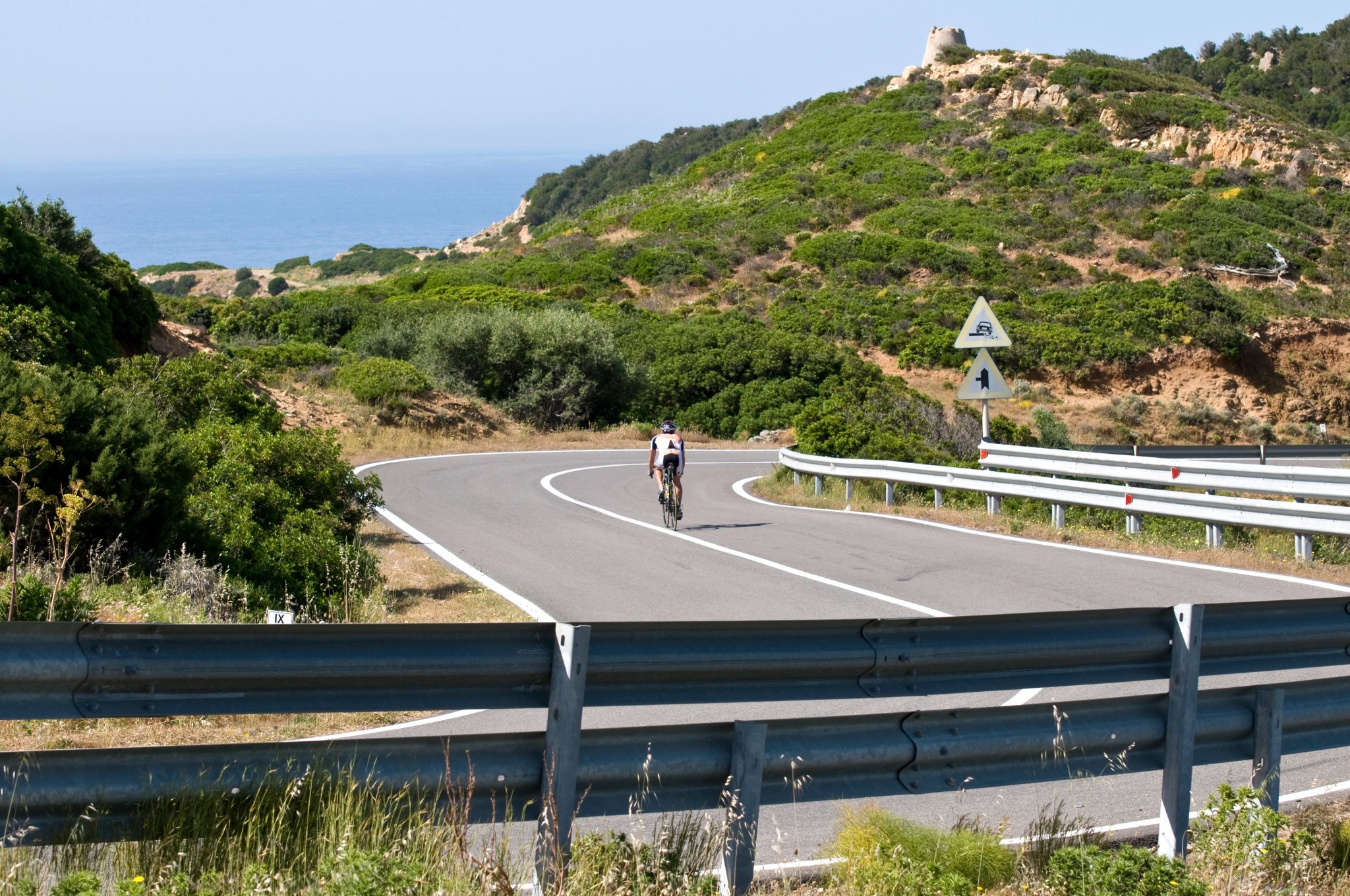
2. West Coast
Great region for variety, scenery, and low-traffic touring
The west coast consistently ranks among Sardinia’s most enjoyable areas for cycling. It offers a balanced mix of rolling coastal roads, authentic villages, and quieter traffic than the busier east-coast resort zones.
Why cyclists love it:
Famous scenic road between Alghero and Bosa, often described as one of Italy’s best coastal rides
Rolling, predictable gradients suitable for most riders
Fewer large resorts → quieter roads
Mix of coastline, wetlands, rural plains, and rugged areas like Costa Verde
Authentic towns spaced at good cycling distances
Good for: touring cyclists, mixed-ability groups, riders who prefer scenic but not extreme routes
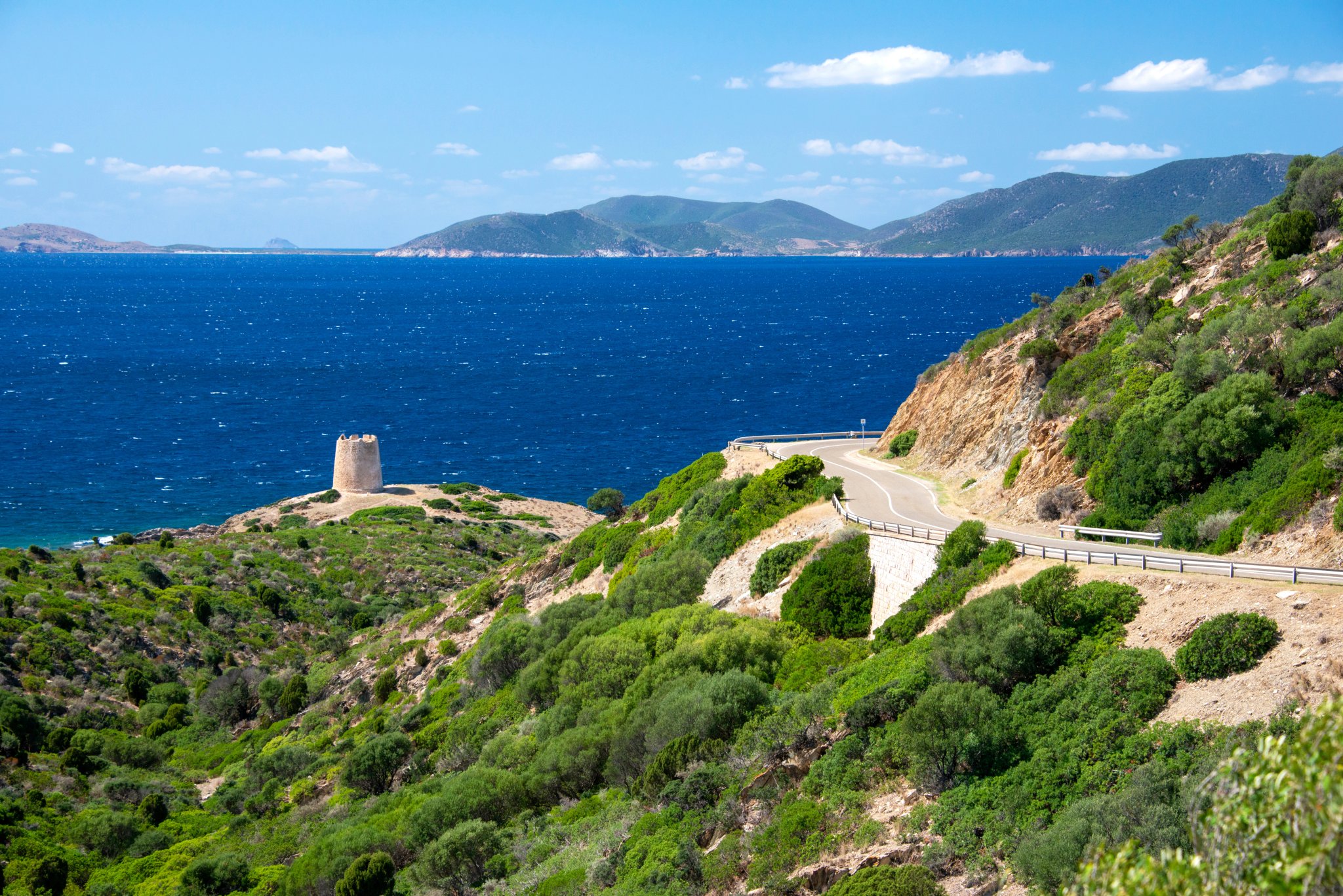
3. Northwest Sardinia
(Alghero & Surrounding Countryside)
Great base for day rides with flexible terrain
The northwest offers one of the best combinations of access, scenery, and services. Riders can choose between flat sections, inland hills, and coastal loops.
Why cyclists love it:
Variety of terrain within short distances
Calm rural roads north and east of Alghero
Easy logistics thanks to Alghero’s airport and services
Good food, cafés, and bike-friendly accommodation
Good for: riders who want flexibility and a comfortable basecamp
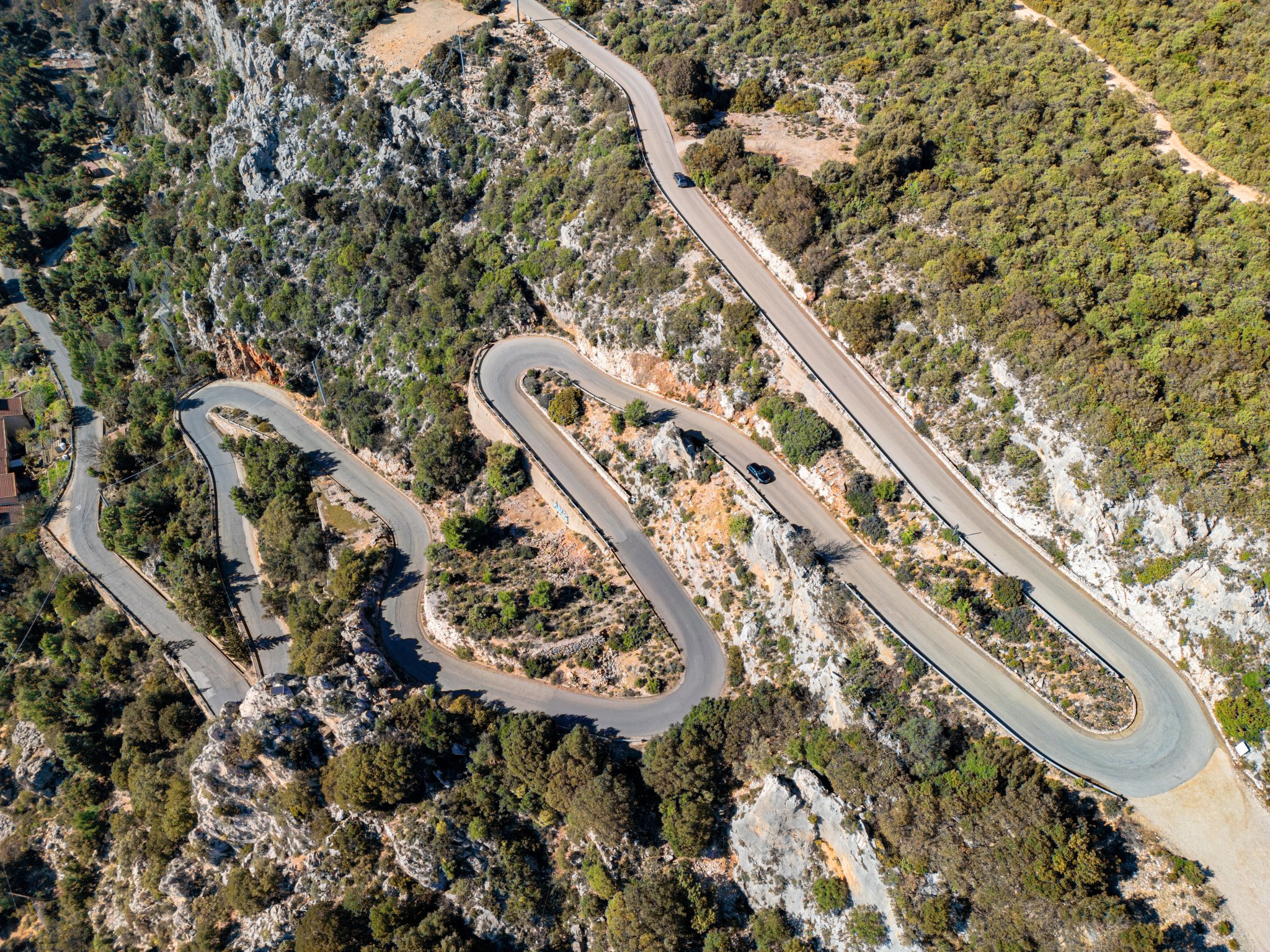
4. Southwest Sardinia
(Iglesiente & Costa Verde)
Wild landscapes and dramatic coastal roads
This is one of the island’s wildest, least-developed regions. The scenery is striking, with old mining villages, long empty stretches, and rugged coastline.
Why cyclists love it:
Low traffic even in peak season
Long, uninterrupted coastal sections
Unique mining-era scenery (e.g., Porto Flavia, Masua cliffs)
A sense of remoteness without being inaccessible
Good for: experienced riders, cyclists who enjoy long quiet stretches, nature-focused tours
5. Barbagia & Gennargentu Mountains (Interior Sardinia)
High-altitude, remote, and perfect for serious climbers
This mountainous interior is Sardinia’s most demanding cycling region, with long ascents and empty roads cutting through high plateaus and old villages.
Why cyclists love it:
Long steady climbs (not Alps-steep, but sustained)
Low traffic and a remote, traditional atmosphere
Cooler temperatures than the coast
Good for: advanced cyclists, endurance riders, cooler-season adventures
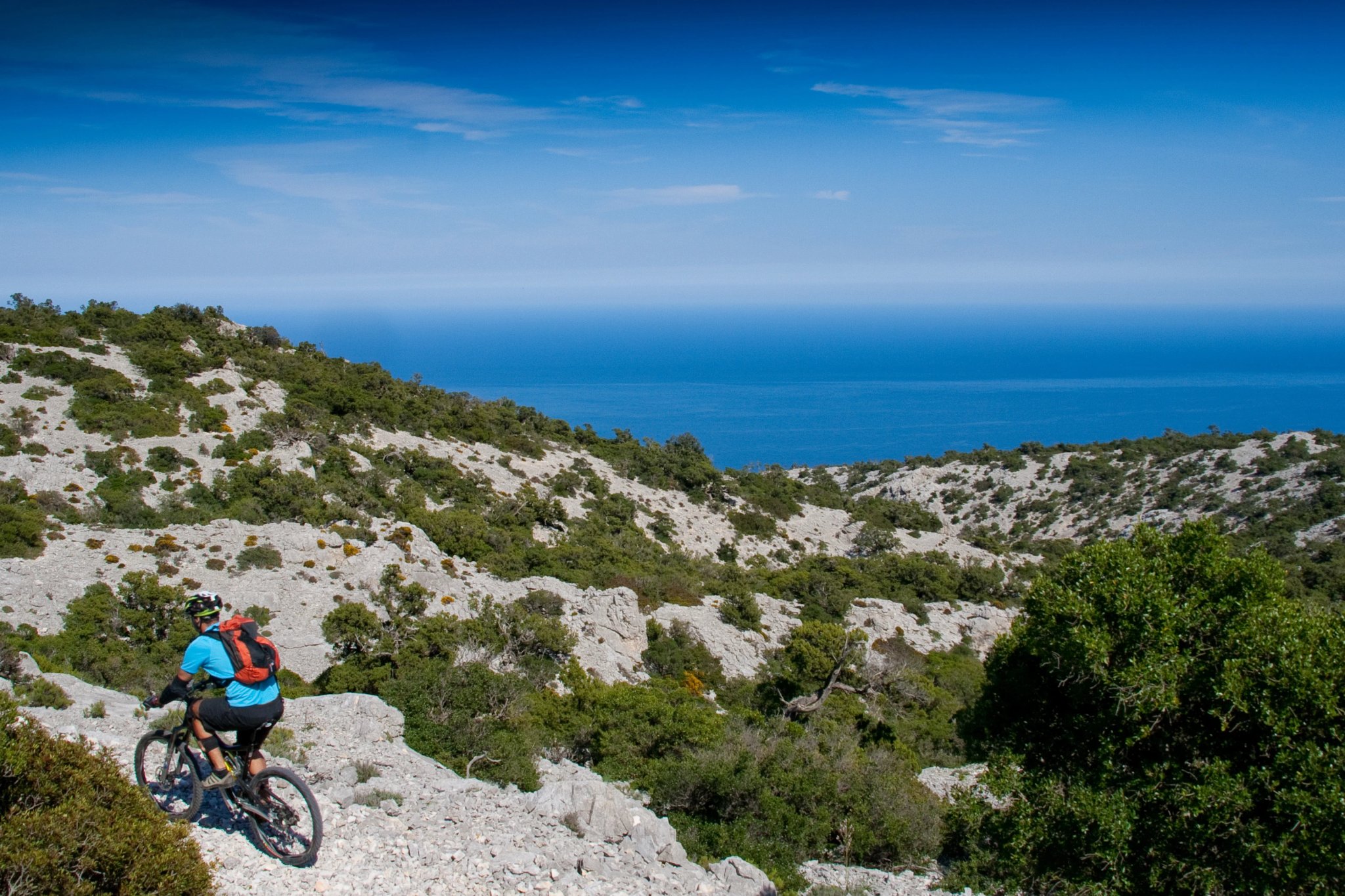
6. Gallura & Northeast Sardinia (Costa Smeralda Hinterland)
Granite hills, rolling terrain, and stylish coastline
Although the Costa Smeralda itself is a luxury tourism hotspot, the inland Gallura region offers excellent cycling: smooth roads, rolling granite hills, cork forests, and scenic villages.
Why cyclists love it:
Quiet roads just a few kilometres inland
Rolling short climbs and fun descents
Unique granite landscapes
Plenty of accommodation and services
Good for: riders who enjoy short punchy hills, gravel possibilities, scenic rolling terrain

Craving more? Explore the top cycling routes across Italy.
Suggested Itinerary
This itinerary was selected because it brings together the very best of Sardinia’s landscapes, capturing the island’s most distinctive cycling highlights in one continuous route.
It combines:
The dramatic central–east coast, famous for limestone cliffs, turquoise bays, and panoramic coastal roads
The rugged Ogliastra interior, considered one of Sardinia’s top regions for quiet, scenic climbing and authentic mountain villages
The warm, relaxed southeast coast, with long beaches and gentle seaside riding
Map
Elevation profile

Day-by-day itinerary:
Day 1: Arrival in La Caletta
Day 2: La Caletta → Cala Gonone
Day 3: Cala Gonone → Villagrande Strisaili
Day 4: Villagrande Strisaili → Ulassai
Day 5: Ulassai → Tertenia
Day 6: Tertenia → Muravera
Day 7: Muravera → Costa Rei
Day 8: Departure
Must-See Places in Sardinia
Sardinia is filled with striking coastlines, rugged mountains, and uniquely local towns — but the east coast, in particular, packs in some of the island’s most memorable highlights for cyclists.
Below are the top places worth seeing as you ride through this part of Sardinia.

Nuraghe Asoru
The Nuraghe Asoru is one of Sardinia’s thousands of mysterious stone towers built by the Nuragic civilization between 1800 and 500 BC. Rising from a gentle hill near Villagrande Strisaili, this megalithic monument once served as both a fortress and a community center. Its circular chambers, built from massive basalt blocks without mortar, testify to extraordinary prehistoric engineering.
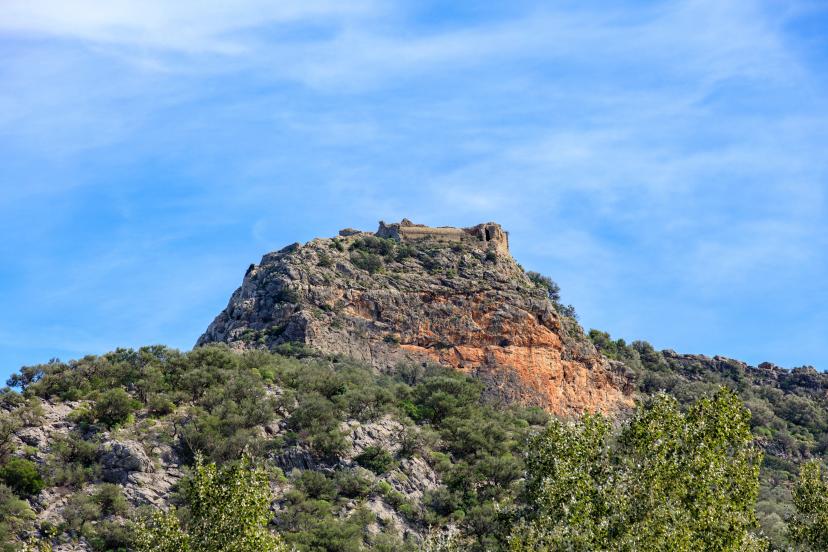
Castello di Quirra
Perched high on a rocky ridge overlooking the southeastern coast of Sardinia, the Castello di Quirra dates to the 14th century. Its strategic position once guarded the trade routes between Cagliari and Ogliastra. Though partly in ruins, its crumbling towers and walls evoke centuries of medieval life and coastal defense.
lanning a cycling route in Sardinia can be tricky, so we’ve pulled together the island’s best coastal and inland sections into one epic, seamless tour.
Our tours take care of all the details, including:
Bike rentals
Comfortable, bike-friendly accommodations
A detailed digital guidebook with daily route notes
GPS tracks for every stage of your tour
Luggage transfers between each stop
Local insights, must-see places, and hidden gems
Full support before and during your trip
Send us an inquiry and let’s create your perfect cycling journey across Sicily.

Facts About Sardinia
Sardinia is more than beaches and turquoise water — it’s an island with deep history, unique traditions, and natural features you won’t find anywhere else in Italy. These quick facts give you a glimpse into what makes Sardinia such a distinctive and fascinating place to explore.
Fun Facts About Sardinia:
To make your cycling trip even more interesting, here are some surprising and memorable facts about Sardinia — the kind of details that bring the island’s character, history, and culture to life as you ride through it.
Sardinia is the second-largest island in the Mediterranean and one of the most sparsely populated regions in Italy.
The island has over 7,000 prehistoric archaeological sites, including the Nuraghe towers dating back to around 1500 BCE.
The island’s coastline stretches for 1,850 km, nearly a quarter of Italy’s total coastline.
Sardinia is known for exceptional longevity, with one of the highest concentrations of centenarians in the world.
The beach of Spiaggia di Capriccioli was a filming location for the 1977 James Bond movie The Spy Who Loved Me.
It is the only region in Italy without motorways, reflecting its relaxed pace and rural character.
About 25% of Sardinia is protected as national parks or nature reserves.
The island’s highest point is Punta La Marmora (1,834 m) in the Gennargentu range.
The nearby island of Asinara is home to a rare colony of albino donkeys.
Porto Flavia, is a mine gallery designed by Engineer Cesare Vecelli in 1924, Masua, Sardinia; Italy
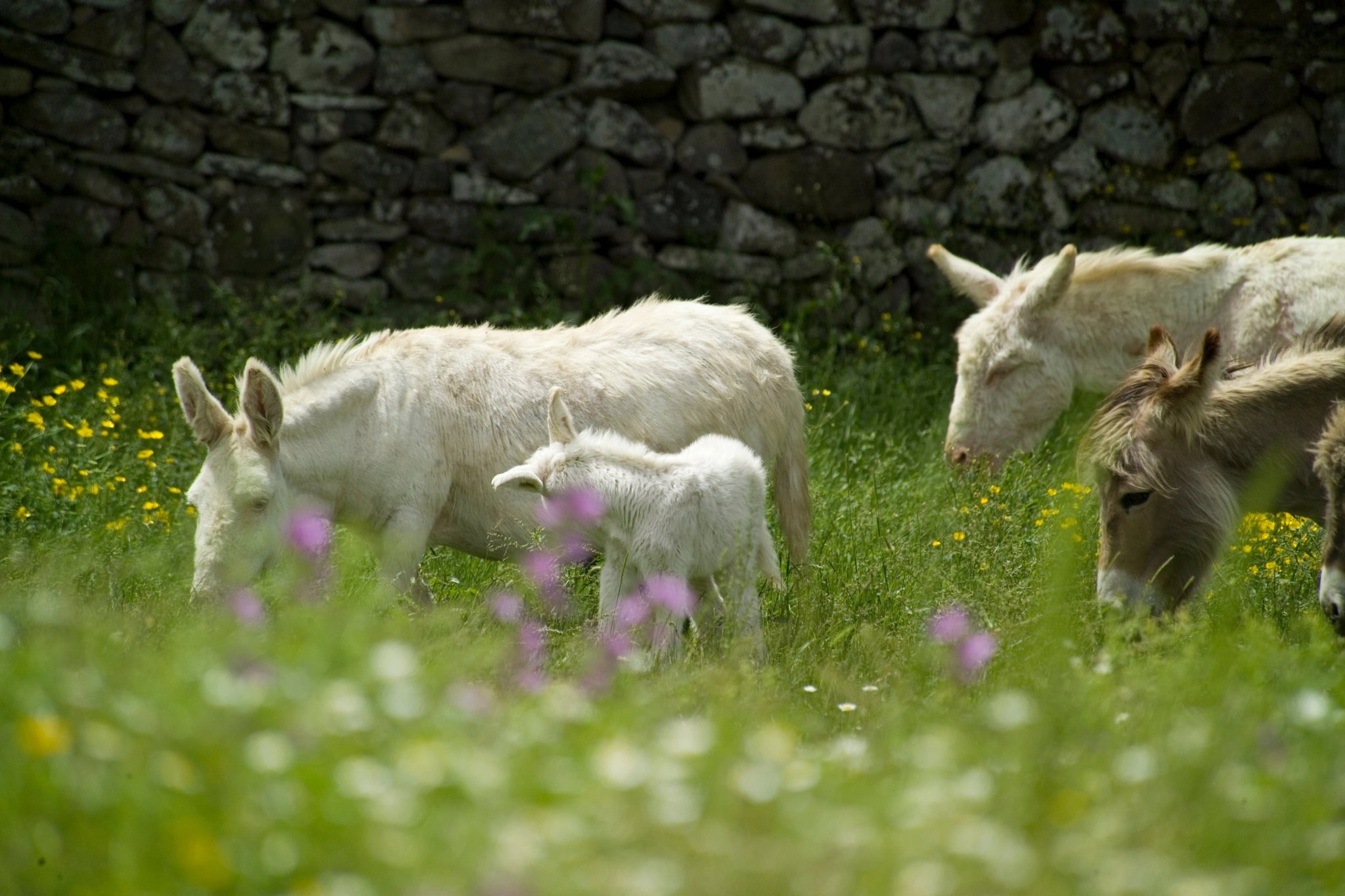
How to Get To/From Sardinia
Sardinia is well connected to mainland Europe, making it easy to start or finish a cycling holiday on the island. You can reach Sardinia by plane or ferry, with several options depending on where your trip begins.
By Air
Sardinia has three international airports, all offering regular flights from major European cities:
Cagliari (CAG) – South Sardinia
Olbia (OLB) – Northeast Sardinia
Alghero (AHO) – Northwest Sardinia
Most airlines operate seasonal routes from spring to autumn, with increased frequency from April to October.
Good to know for cyclists:
All three airports offer bike-friendly transfer options
Packing your bike in a box or bag is usually required by airlines
Car rentals and private transfers are widely available on arrival
Best airport for cycling the east coast
For our cycling holiday in Sardinia, the route starts in La Caletta, and the most convenient airport is Olbia (OLB). It’s the closest to the starting point and offers the easiest transfers for cyclists.
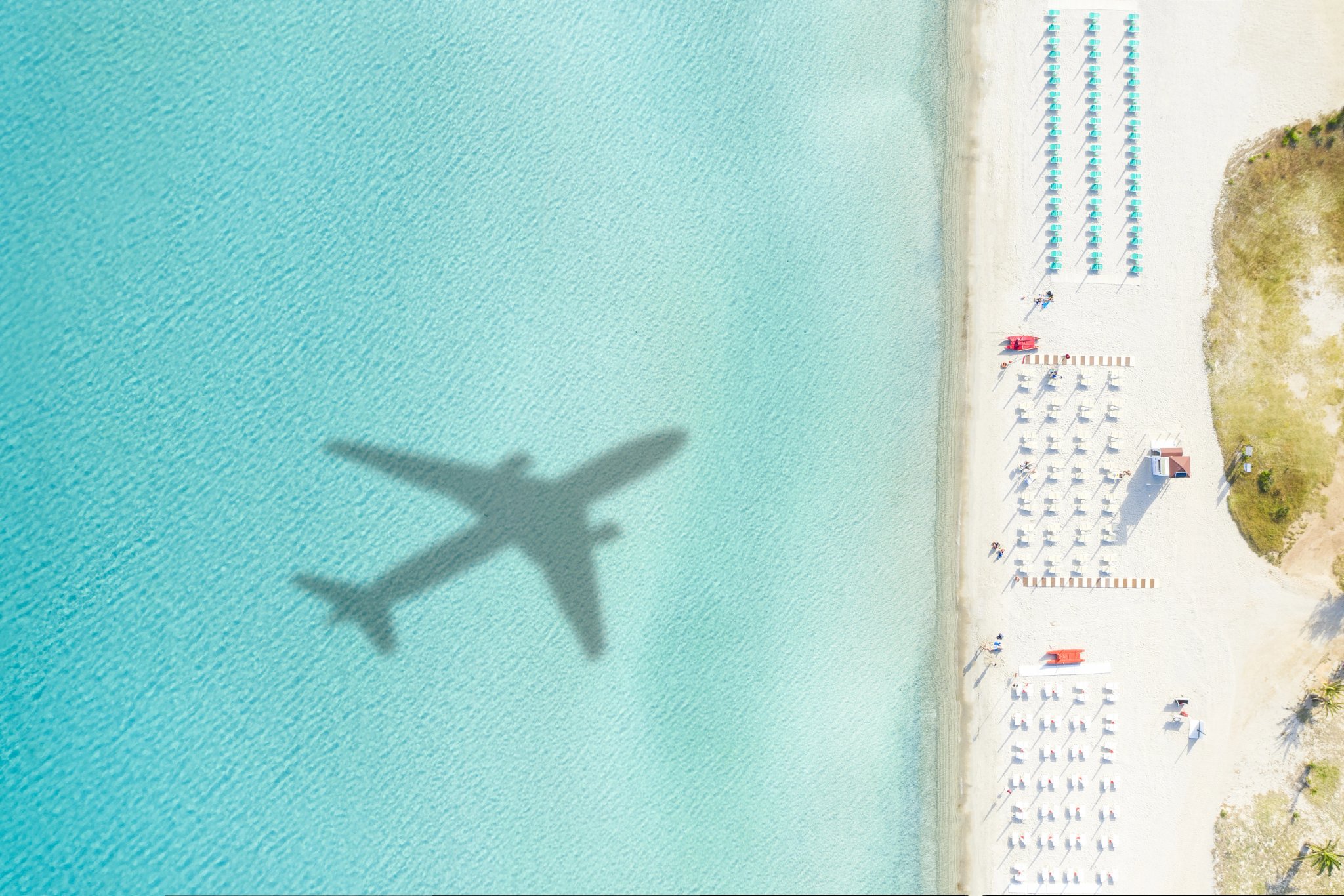
Getting Around Sardinia
Public transport in Sardinia is functional but limited — especially in rural and inland areas — so it’s important to understand what works well and what doesn’t when planning a cycling trip.
Buses
Buses are the main form of public transport on the island.
Operated mostly by ARST, with additional local companies in some towns.
Good connections between major towns (Cagliari, Olbia, Nuoro, Oristano).
Limited or infrequent services in small villages and mountain areas.
Some buses allow bikes, but rules vary by route and capacity, so always check in advance.
Useful for: airport transfers, moving between larger hubs.
Less useful for: reaching remote starting points or managing mid-tour logistics.
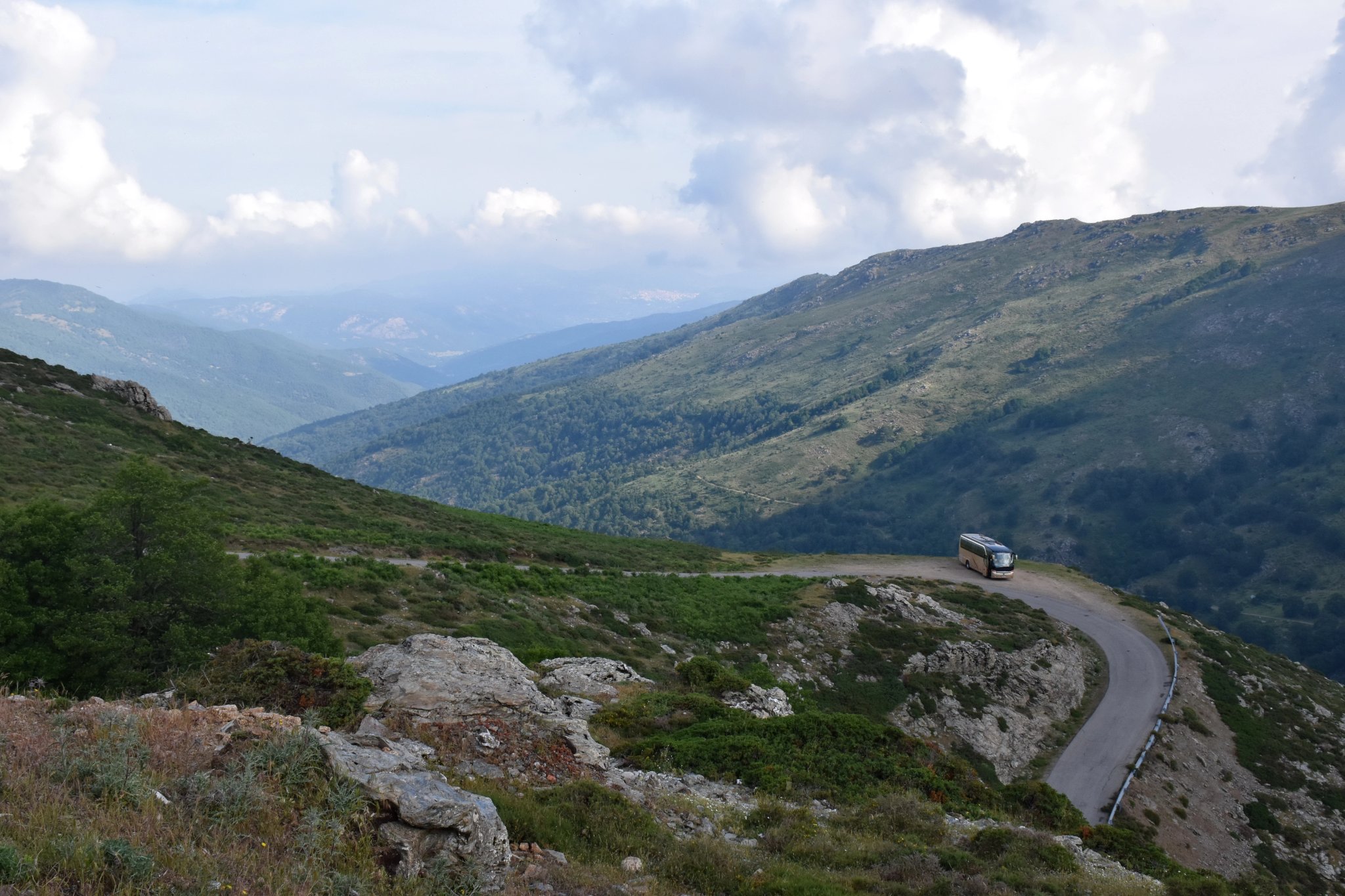
Trains
Sardinia’s rail network is small and does not cover the whole island.
Main line: Cagliari – Oristano – Macomer – Sassari
Branch lines: Sassari – Alghero, Sassari – Olbia
Important for cyclists:
Trains can accept bikes, but bike spaces may be limited.
No rail service on the east coast — meaning areas like La Caletta, Orosei, Dorgali, Cala Gonone, and Ogliastra have no train access.
Useful for: north–south travel on the western side of Sardinia.
Not useful for: your itinerary’s start/end points on the east and southeast coasts.

Taxis & Private Transfers
Because public transport doesn’t reach many cycling hotspots, most riders rely on pre-arranged transfers, especially with bikes.
Widely available from all airports
More reliable than buses/trains for early/late arrivals
The easiest way to transport bike boxes or large gear
Ideal for getting to La Caletta or returning from Costa Rei
Most practical option for all cyclists.
Car Rentals
Available at all major airports (Cagliari, Olbia, Alghero).
Good for accompanying non-cyclists
Useful if you want extra flexibility before/after the tour
Many rental companies allow bike racks (request in advance)
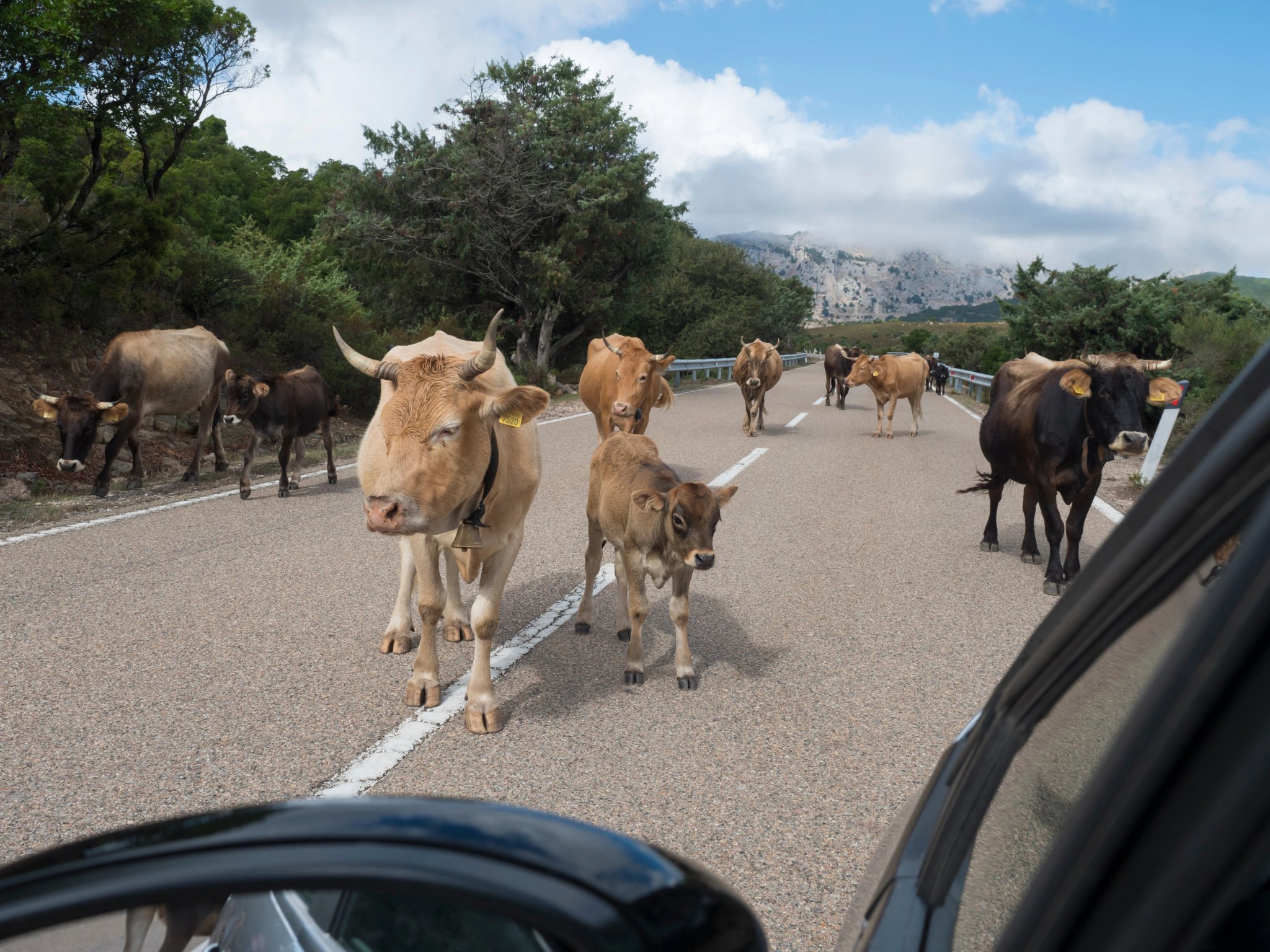
Need more travel-related information, including visas, currencies, language tips etc? Check our guide to cycling in Italy.
Plan Your Sardinia Cycling Adventure
Planning a cycling trip in Sardinia is absolutely possible on your own — but the logistics more complex than they appear.
Choosing the right route, finding bike-friendly places to stay, and navigating Sardinia’s rural road network all require time, research, and local insight.
That’s where we come in.
We’ve crafted and fine-tuned our Sardinia cycling trip to bring together the island’s best coastal roads, inland highlights, and authentic towns — without the stress of planning everything yourself.
We take care of all the essentials. Simply send us an inquiry, and we’ll help you plan the perfect cycling journey through Sardinia.

Hassle-Free
We handle itineraries, accommodations, and anything else you prefer not to deal with, so you can enjoy a carefree holiday.

Completely Customizable
Flexibility is our middle name — whether you want more or less, or just beyond ordinary, we’ll make it happen.

Book with confidence
We are a financially protected company, fully bonded and insured, keeping your money safe and allowing you to travel with confidence.

Unbeatable support
Our 24/7 customer support is where we show our passion, bringing you a better experience by making your well-being our number one priority.
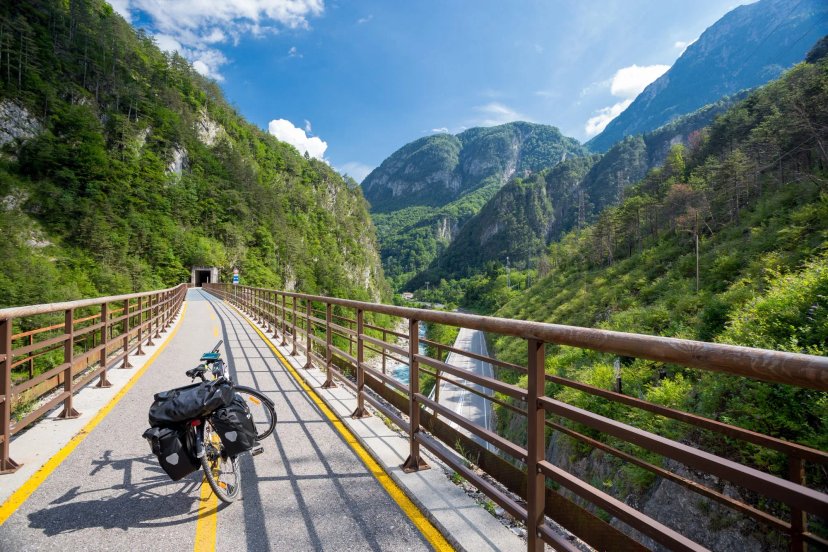
.jpg&w=3840&q=75)
